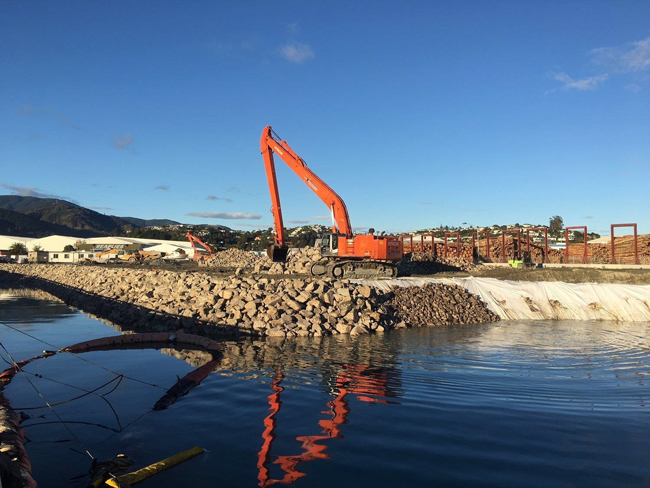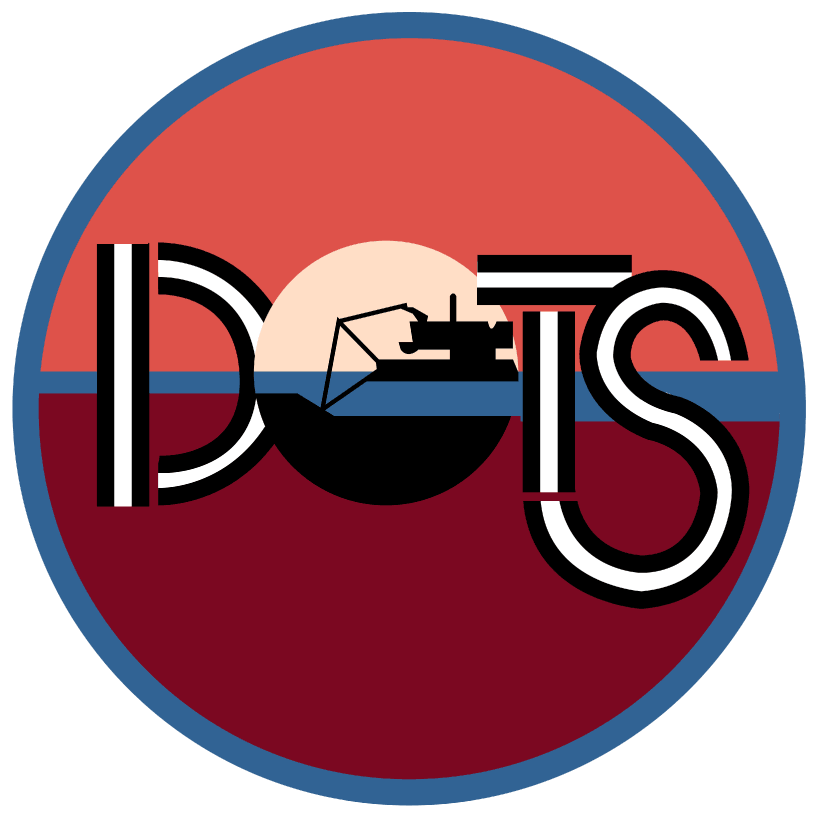CALWELL SLIPWAY REMEDIATION PROJECT

- Title: Calwell Slipway Remediation Project
- Country: New Zealand
- Project type: Other
- Greater Beneficial Use Area: Tasman Bay
- Focus Area approximate center coordinates: -41.26, 173.28
- Nearest Federal Navigation Project: Port Nelson
- Owner: Port Nelson
- Project Partners: Port Nelson Limited, Ministry for the Environment, GHD Inc.
- Beneficial Use Categories: Construction and Industrial/Commercial Uses
- Dredge type: Mechanical
- Status: Complete
- Keywords: Calwell Slipway Basin, Port Nelson, copper, tributyltin, remediation
Description:
Calwell Slipway Basin (CSB) is located in Port Nelson, Tasman Bay, New Zealand. It contains the Calwell Slipway, which is the largest slipway at the port and plays a vital role in the regional economy. CSB operations began in May 1970, and the latest dredging took place in 1984. Subsequently, sediment accumulation slowly began impacting navigational and operational functions. Due to its contamination levels, CSB was identified as one of New Zealand’s most polluted sites, ranking second on the Ministry for the Environment (MfE) Contaminated Sites Remediation Fund priority list.
The primary contaminants of concern in the sediments at this site were copper and tributyltin (TBT), originating from years of port operations and the application of antifouling agents. In 2010, the MfE and Port Nelson Limited (PNL) initiated a collaboration with GHD Inc to remediate the area. The primary objectives of this remediation project were to improve navigability within CSB and to remove the contaminated sediments, all while ensuring the protection of human and environmental health. Given that Port Nelson accommodates seafood processing facilities, log storage, and marine engineering business, and is surrounded by national parks and marine reserves, the success of the remediation efforts was crucial for the well-being of various stakeholders in the vicinity.
The sediment in CSB had TBT and copper concentrations that exceeded the regulatory limits for ocean disposal. Inland disposal was considered too expensive for the approximately 30,000 cubic meters of contaminated sediment that needed to be addressed. PNL and their project partners had to find an alternative solution.
After careful consideration, the decision was made to stabilize the contaminated sediment and beneficially use it for land reclamation purposes at the port. Extensive lab and field testing was conducted to determine the optimal blend of sediment and stabilizing agents. In 2018, the sediment in the slipway was dredged and mixed on-site with a combination of Portland cement and activated carbon. This mixture resulted in a homogenous blend known as ‘mudcrete’, which reduced sediment permeability and the leachability of contaminants.
Once the mudcrete was prepared, it was strategically placed in the designated reclamation area. To protect against weathering and erosion, the mudcrete was covered with rocks. Given that the region is prone to active fault networks, ensuring stability during seismic events was crucial to prevent sediment release into the port.
The CSB remediation project achieved significant success on multiple fronts. Firstly, the post-construction assessment indicated that TBT and copper concentrations in the remaining slipway sediments were below the specified remedial targets. This outcome demonstrated the effectiveness of the remediation efforts in reducing contaminant levels.
Additionally, the project resulted in the creation of a new reclamation area, adding approximately two acres of valuable land to the port. This additional land, valued at NZD $1.8 million, provided space for logging storage, contributing to the economic development of the port.
The dredging activities, guided by the hydrographic survey results, successfully restored navigability in the area, allowing the port to resume normal operations without hindrance. This accomplishment was crucial for ensuring the continued efficiency and functionality of the port.
In summary, the removal of contaminated sediments not only improved the ecological quality of the port but also demonstrated the feasibility and effectiveness of blending sediment with stabilizing agents for beneficial purposes. This approach offers an alternative to costly inland disposal, which would otherwise be the only option. With funding from PNL and the MfE Contaminated Site Remediation Fund, this project achieved its remediation goals, leading to the removal of CSB from the priority list for remediation by the MfE.
The Calwell Slipway Remediation project serves as a compelling example for future remediation initiatives, illustrating that the stabilization of contaminated sediment in conjunction with a beneficial use approach can successfully meet environmental remediation targets while simultaneously improving navigation and commerce in the area.
Further readings:
- Dengate C, Udema W, and Kroef G. (2019). Sediment stabilisation: Blending science, engineering and construction for successful project delivery. In: Australasian Coasts and Ports 2019 Conference: Future Directions from 40 [Degrees] S and beyond, Hobart, 10-13 September 2019. Engineers Australia. p. 307–310.
- Dengate C, Gillespie T, and Udema W. (2022). Stabilization of dredged sediments: Enabling beneficial re-use solutions in a contaminated port. In: Erbland PJ, Jones BN, editors. Ports 2022. American Society of Civil Engineers. p. 518–525. September.
- Thorburn WD, Farquhar GB. (2019). Remediating contaminated marine sediments using a mudcrete reclamation. In: Acosta-Martinez HE, Lehane BM, editors. 13th Australia New Zealand Conference on Geomechanics. Sydney, Australia: Australian Geomechanics Society. p. 647–652.
- Udema W, Dengate C. (2019). Remediation gumbo: Blending science, engineering and construction for successful project delivery. In: Battelle 2019 Sediments Conference Proceedings.
Website links:
Videos:
Calwell Slipway Timelapse. YouTube, Uploaded by Port Nelson, 20 July 2014.
Calwell Slipway Remediation Project December 2017. YouTube, Uploaded by Port Nelson, 12 December 2017.
Calwell Slipway Remediation Project. YouTube, Uploaded by Port Nelson, 10 June 2018.
News releases:
- DredgingToday. (2018). Port Nelson: Calwell Slipway cleanup works completed. June 25.
- O'Connell T. (2018). Port Nelson slipway remediation digs the dirty depths. Stuff. June 21.
- Parker L. (2018). Port Nelson’s Calwell Slipway cleanup complete. DredgeWire. June 26.
- Waterford Press. (2019). Port project meets environmental goals. June 21.

